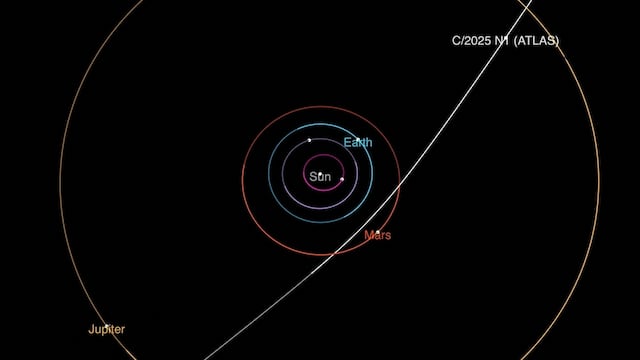While we’re not worried about fighting its own threat to us, it can prove to be very useful for others.

How the interstellar comet 3I/ATLAS is helping scientists learn about how to protect planet Earth

When comet 3I/ATLAS was first spotted streaking across the sky in July 2025, it looked like another fleeting astronomical curiosity. It has, however, become an unexpected testing ground for planetary-defence specialists who are working out how to track dangerous objects long before they approach Earth.
How is comet 3I/ATLAS helping scientists?
What makes 3I/ATLAS so useful is not the risk it poses – those in the know say it poses none – but what it represents. As only the third interstellar object ever detected, it offers a rare chance to study something that formed around a distant star roughly seven billion years ago and is now cutting through the Solar System at extraordinary speed. Unusual objects like this push tracking systems to their limits, revealing weaknesses that wouldn’t appear when following slower, more predictable comets.
Testing new tactics from another planet
The breakthrough moment came in early October, when 3I/ATLAS slipped behind the Sun from Earth’s perspective. Ordinarily, astronomers would simply wait for it to re-emerge. Instead, ESA scientists decided to try something never attempted before: continue monitoring it from Mars.
Two orbiters – Mars Express and the ExoMars Trace Gas Orbiter – caught the comet’s rapid passage near the Red Planet, gathering data from a viewpoint entirely different from Earth. That shift paid off. By combining the Martian images with previous Earth-based observations, analysts refined the comet’s predicted position by a factor of ten. The Minor Planet Center even accepted these measurements into its official database, marking the first time data collected from orbit around another world has been used this way. Amazing, right?
We're hosting a live event on Wednesday, Nov. 19 to share the latest images of the interstellar comet 3I/ATLAS, collected by several NASA missions.
— NASA (@NASA) November 17, 2025
Tune in for the details—and send in your questions for the livestream with #AskNASA: https://t.co/vcFamtcjK2 pic.twitter.com/0d7fkTwRVP
What are we learning from comet 3I/ATLAS?
The success offers a clear message for the future. If tracking systems can merge simultaneous views from multiple planets, scientists can calculate trajectories more accurately and more quickly, a crucial advantage when dealing with objects that might one day pose a real threat.
And the experiment isn’t finished. ESA’s Jupiter Icy Moons Explorer is now observing 3I/ATLAS after its close pass by the Sun, with results expected in early 2026. For a comet passing through once and never returning, its impact on planetary defence may last far longer than its visit.
Related stories
Get your game on! Whether you’re into NFL touchdowns, NBA buzzer-beaters, world-class soccer goals, or MLB home runs, our app has it all.
Dive into live coverage, expert insights, breaking news, exclusive videos, and more – plus, stay updated on the latest in current affairs and entertainment. Download now for all-access coverage, right at your fingertips – anytime, anywhere.
Complete your personal details to comment